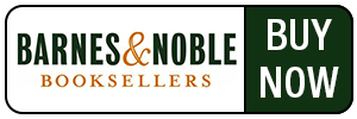What can you eat if you have a yeast-related problem? The Yeast Connection Handbook provides general information on the effects that some common foods can have on yeast sufferers, and crucial instructions on detecting the specific foods to which you are particularly sensitive or allergic. The authors then present over 225 recipes—for breads, soups, entrées, desserts, and more—that eliminate most common food allergens while providing a diet that is healthful and satisfying.
William G. Crook, MD, received his medical education at the University of Virginia, the Pennsylvania Hospital, Vanderbilt, and Johns Hopkins. He is the author of over a dozen books and numerous articles in medical and lay literature.
Table of contents
Chapter 1
The Yeast Connection: An Overview
Chapter 2
People Who Feel Sick All Over
Chapter 3
Why Women Are Affected More Often Than Men
Chapter 4
Common Problems That Affect Adults of Both Sexes
Chapter 5
Other Disorders That Affect Men and Women
Chapter 6
Health Problems That Affect Women More Than Men
Chapter 7
Yeast-Related Problems That Affect Only Women
Chapter 8
Children’s Health Problems
Chapter 9
Steps You’ll Need to Take to Regain Your Health
Chapter 10
More Information About Diets and Antiyeast Medications
Chapter 11
Other Therapies That May Help
Chapter 12
Other Topics of Interest
Chapter 13
Potpourri
Chapter 14
Sugar-Free, Yeast-Free Recipes
Appendix A
A Special Message to the Physician
Appendix B
Other Sources of Information
Appendix C
Postscript
Index
Review Quote
"This book makes a compelling case for how a basic excess of yeast in the human body is systemically destroying our chances at healthier lives."
Introduction or preface
This book was written to bring you up-to-date information on yeast-related health problems and easy-to-follow steps you can take to overcome them.
My first yeast book, The Yeast Connection, was published in hard cover in 1983, with a second edition in 1984. Then, it was expanded and updated in a soft cover third edition and published in 1986. Since that time, only minor changes have been made.
During the late 1980s and on through the 1990s, new scientific observations and medical reports provided support for the yeast connection to PMS, psoriasis, asthma, multiple sclerosis, chronic fatigue syndrome, endometriosis, vulvodynia (burning vulva), interstitial cystitis and autism. There was also new information about:
▪ The role of simple sugars in promoting yeast overgrowth in the digestive tract.
▪ Prescription antiyeast medications, including Diflucan and Sporanox.
▪ Nonprescription antiyeast agents, including probiotics, garlic and citrus seed extracts.
There was also an “explosion” of knowledge about:
▪ Supplemental vitamins, minerals and essential fatty acids.
▪ Free radicals and their role in contributing to chronic health disorders and the importance of antioxidants in controlling them.
▪ Ginkgo biloba and CoQ10 and other nonprescription remedies that contribute to better health.
▪ The importance of vegetables and fruits and their role in preventing cancer and other chronic health disorders.
▪ The mind/body connection.
▪ Food and chemical sensitivities.
▪ Thyroid and adrenal hormones.
I gathered all this new material together and included it in my 731-page book, The Yeast Connection and the Woman, published in the late spring of 1995. In his introduction, Philip K. Nelson, M.D., of Sarasota, Florida, said:
The Yeast Connection and the Woman is superb. As with his previous publications, this book is well organized and written—immensely readable… up-to-the-minute, factual and practical… this is a book that will be useful to any reader… The suggestions are practical, affordable and scientifically based. Sick and well alike would benefit if each one were to adopt the healthy lifestyle proposed.
I was, of course, delighted with Dr. Nelson’s introduction. Moreover, this book received praise from many people, including readers of The Yeast Connection who were looking for new information. But because many people with yeast-related problems were overwhelmed by a book of this size, I wrote this condensed version with simple, easy-to-follow instructions.
Then, in 2002, because many women wanted a more comprehensive and up-to-date discussion of health problems which affect them, I made an extensive revision of The Yeast Connection and the Woman. It’s still a big book, but with new information on vaginitis, vulvodynia, PMS, interstitial cystitis, diet, chemical sensitivities, alternative medicine and much more.





